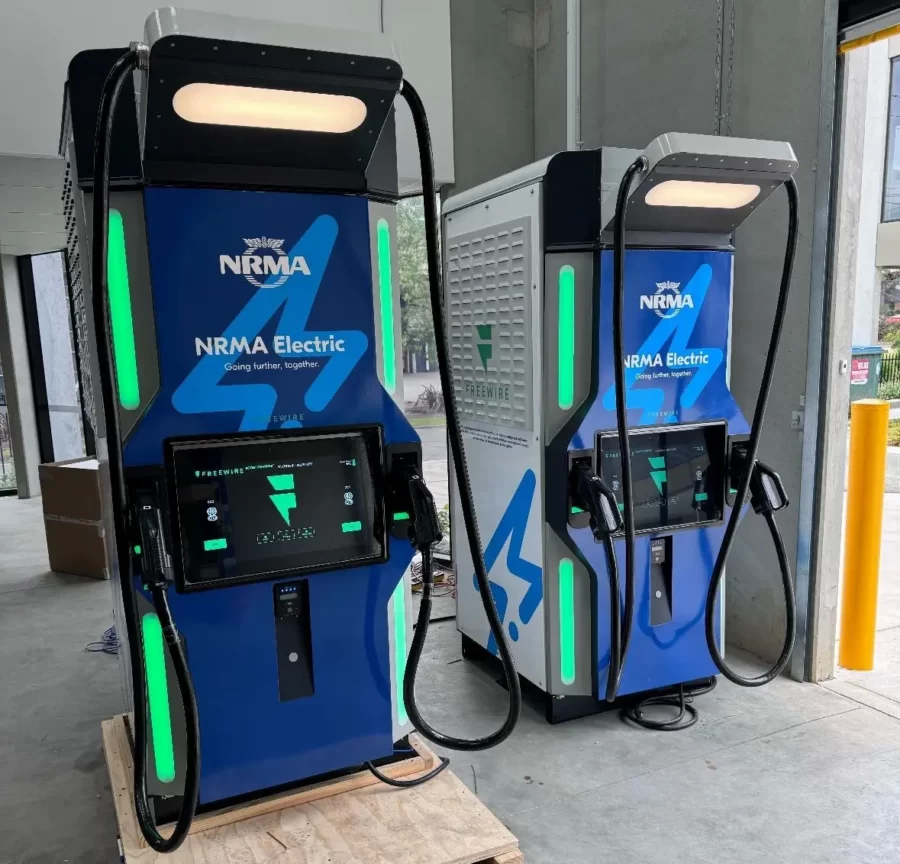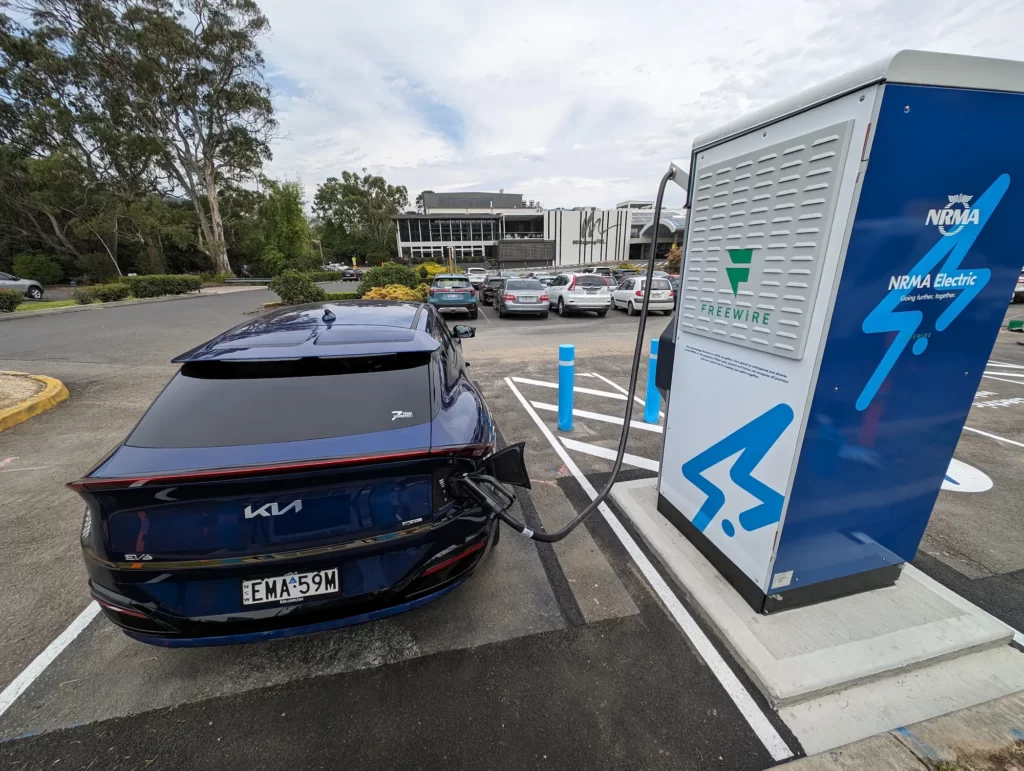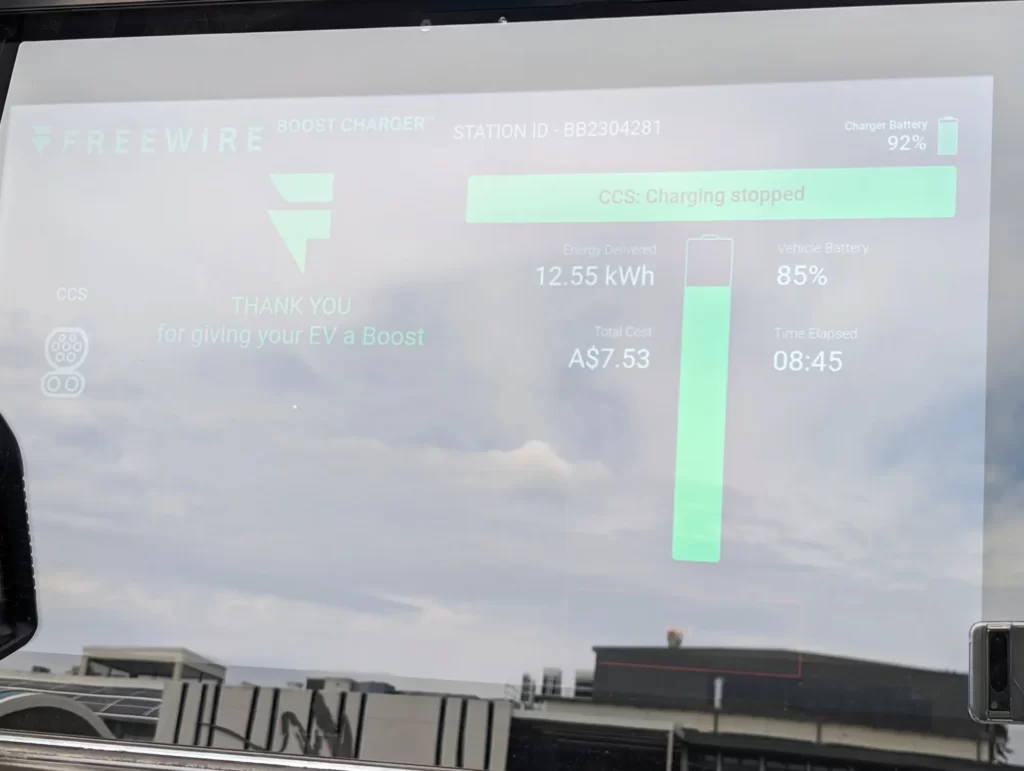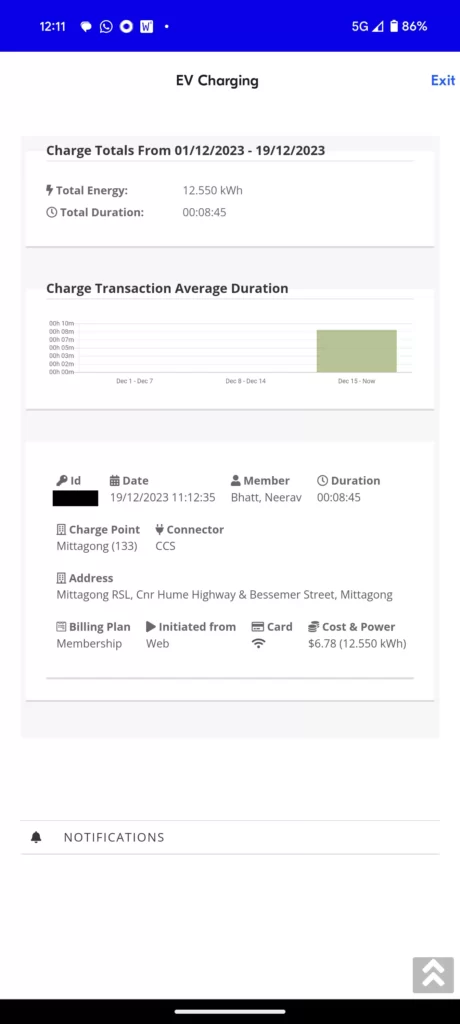Yesterday I was the first member of the public to use one of the two new NRMA Freewire Boost Charger 150 units, the first ever installed in Australia at Mittagong RSL car park South of Sydney.

What makes these electric vehicle chargers unique is the built-in 160kWh energy storage each charger has.
Apologies for the photos of the charger screen, it was very reflective so hard to take photos of.
At the moment the My NRMA app is the only way to start charging at an NRMA charging station which isn’t free.
There is no tap to pay via RFID or credit/debit. Hopefully that happens in the future as the Freewire Boost Charger 150 units at Mittagong are designed to be capable of reading an RFID card and a Payter payment terminal is below the screen.
While the price on the charger screen and in the app says 60c per kWh, the amount I was charged to top up my Kia EV6 GT-Line RWD media loan review car, was less because NRMA members like myself get a 10% discount when using an NRMA EV charger.
Mittagong RSL requires non-members to scan their ID at entry in order to be able to use facilities like toilets or buy food. This is a pretty standard entry requirement for registered clubs.
These NRMA Freewire units manufactured in the USA were brought into Australia by Mark Lampard from go EV, an Australian importer and distributor of electric vehicle and sustainable energy products.


The Boost Charger 150 is an innovative charging solution capable of charging electric vehicles in approximately 15 minutes while using low power and voltage grid infrastructure, which not only reduces deployment costs but also expedites the installation process compared to EV chargers sold by other brands.
The battery integrated design enables the Boost Charger 150 to easily connect to existing electrical infrastructure without costly and slow negotiations with the local electricity grid owner.


If you looked at all the photos I took of the charging process, you’ll notice in the top right corner of the charger screen there is a “Charger battery” percentage which was 97% when I started my charge.
Boost Charger 150 supports up to 150 kW output, only needs a 27 kW grid connection and has a 160 kWh battery capacity.
That means it trickle charges itself all day and night @ 27kW rate. If the battery has enough remaining capacity and you’re the only one using it with a modern fast charging EV capable of 150kW+ charging then you’ll get the top speed.
If the battery has enough capacity and two cars are plugged into it at once then the charging rate is split between them at max 75kW charge rate each.
Worst case scenario if the charging site is very busy eg: hypothetically on Christmas Eve lots of EVs have recently used the charger which has depleting the battery, then you’ll get a minimum 27kW charge rate, which is what the unit is trickle charged at from the grid.
A spokesperson for NRMA explained to me that they will be installing these Freewire Boost Charger 150 at several Australian locations so they can find out how well they work in grid constrained areas.
NRMA will continue to use Kempower, ABB etc as well so that they eventually have an ecosystem of chargers that their team are familiar with and can deploy at new locations based on which is best suited to that location.
NRMA Energy CEO Carly Irving-Dolan said using a range of technology solutions was necessary to build a robust and reliable charging network:
“Battery-integrated chargers are commonly found overseas, but this is the first time this technology will be deployed here in Australia”.
“We need to innovate, think outside the box and investigate all potential solutions to give us the best possible chance at building a network that is fit-for-purpose”.
“The NRMA is building a suite of fast chargers by using a range of technology solutions to address the challenges we face with aging infrastructure and unreliable power supply.”
“It means no community is left behind with charging infrastructure as we can deploy chargers in regional locations that may not have been able to accommodate the previous technology.”
In some locations, upgrades to the grid would prove too costly and time-consuming to be viable. The deployment of this type of infrastructure allows the NRMA to connect straight to the grid with minimal delay, while still providing maximum charge to EV drivers.
The NRMA is building one of Australia’s largest EV charging networks and currently has over 100 chargers in 70 locations.
The NRMA unveiled the new charger in Mittagong today as part of its partnership with the Australian Government to build 117 chargers across the National Highway Network.











Just don’t use Trititrash.